#climate warming
Text
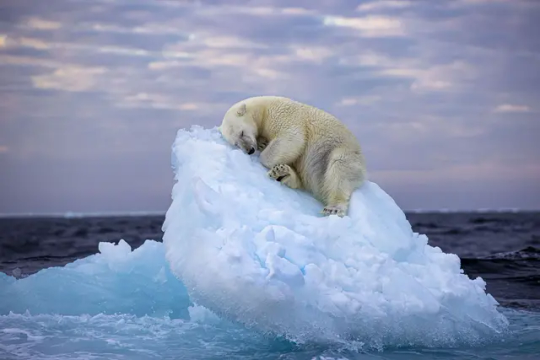
In Dr. Douglas Gurr's words, "This breathtaking and poignant image allows us to see the beauty and fragility of our planet. His thought-provoking image is a stark reminder of the integral bond between an animal and its habitat and serves as a visual representation of the detrimental impacts of climate warming and habitat loss."
This photo is heartbreakingly beautiful. No wonder the ‘Ice Bed’ by Nima Sarikhani won the 'Wildlife Photographer of the Year ' Award.
#polar bears#habitats#climate warming#habitat loss#sleeping bear#touching images#wildlife photography#beautiful nature photography#awww#iceberg#Norway#frozen North#wildlife#wild animals#sleeping animals
169 notes
·
View notes
Text
It's +10 ° Celsius where I live right now and I'm not enjoying it. It's weird and unsettling and we already had that last month. Please send some frost.🙏
and yeah Belgium does tend to have mild winters but this? Halfway through December with no minus temperatures in sight in the next two weeks? That's just not right. We used to still get frost and some snow in December ten years ago,and it has dwindled down to almost nothing over the years. It's supposed to be winter right now, not Autumn.2.
I just want to have normal seasons
#and then we'll be getting random frost nights in april like in 2021 again aren't we😒#look i'm not even asking for a white christmas here but please at least drop the temperatures back to zero#there's already bulb plants in my garden that think it's spring#unnatural#climate change#weather#winter#climate warming#belgian weather
5 notes
·
View notes
Text

3 notes
·
View notes
Text
“Zombie fires” are fires that ignite in one fire season, smoulder through the winter months under the snow, and re-emerge early in the spring before lightning and human caused ignitions begin in earnest.
Northern fire managers prefer the term “overwintering fires,” which is more technically precise. It also avoids stoking the pervasive negative perceptions regarding wildfire, which in the boreal is an essential agent of forest renewal and health.
But it is hard to resist using a term with such strong communication messaging. Are zombie fires something to worry about? As a team of scientists who have dedicated our careers to understanding changing boreal fire regimes, we decided to find out for ourselves.
Unusual fire behavior
Fire behavior refers to the way a fire burns. This seemingly unusual fire behavior was previously of limited concern as overwintering fires are hard to detect and, we think, were relatively infrequent. As such, we know very little about these fires or their potential impacts.
However, as rapid climate warming drives larger, longer and more severe wildfire seasons across the boreal biome, overwintering fires are becoming more common, and concerns by fire managers and scientists alike are increasing.
Re-ignitions from overwintering fires initiate the fire season earlier than usual, adding additional demands to already strained fire crews and firefighting resources.
For example, the exceptionally early and intense fire season this year in Alberta may have been fueled in part by early ignitions from overwintering fires given the late season burning throughout western Canada last fall.
Carbon emissions
There are concerns about the potential ecological and carbon impacts of these fires, but we currently have no data. The most socially relevant concern relates to carbon emissions and potential feedbacks to climate warming.
Much of the boreal biome is characterized by deep, peat soils created by cold, poorly drained conditions. These conditions slow decomposition and support the accumulation of plant material, often peat moss or Sphagnum, as thick layers of carbon rich soil sitting atop the underlying parent material. In some places, this can be many meters thick.
Content continues below
Boreal peatlands are thought to store as much as 30 per cent of the Earth’s terrestrial carbon stocks. As such, threats to these regions have the potential to compound already rapid increases in atmospheric carbon dioxide concentrations that underlie global warming.
When these thick, organic soils are dry, they can support the deep and sustained smouldering necessary for overwintering behavior. Scientists expect that these peatland environments will be home to most overwintering fires.
Wildfires are also threatening the resilience of boreal forests, with deeper burning and more frequent fires leading to forest compositional changes, and in some cases the conversion of forest to non-forested land covers.
1 note
·
View note
Link
Excerpt from this story from The Revelator:
Long before cities and industrial farms emerged, the river supported diverse mountain and desert ecosystems, providing refuge and resources for countless animals and plants.
Many of those species now struggle to survive the cumulative pressures from drought, climate warming and human developments. And they remain an overlooked part of the region’s water crisis.
Millions of trees have also been lost to insects and disease exacerbated by drought, including along riverbanks, where less shade is warming streams. Many desert plants, like ocotillos, Washington fan palms and Joshua trees, are also declining from warming temperatures, less precipitation and thirstier animals.
Across the region streams and springs are drying up, too, leading to declines in populations of aquatic amphibians, fish and insects that make up the base of the food chain.
“We haven’t seen any entire species go extinct yet,” says Michael Bogan, an assistant professor in the School of Natural Resources and the Environment at the University of Arizona. “But if you project this into the future, that’s certainly something we’re worried about.”
Birds are at risk, too, a recent study found. The researchers visited areas of the Mojave Desert that had been studied in the previous century and found that, on average, the sites lost 43% of their species. The main driver, they believe, is decreased precipitation from climate change.
Birds who live in the desert already endure harsh conditions, but climate change could push them past tolerable limits, causing lethal hyperthermia or dehydration. A lack of water can also cause reduced fitness and or force birds to skip a breeding cycle.
Mammals aren’t immune to the changes, either. Another recent study found grave threats to pronghorn across the region. Their models predicted that half of the 18 populations they studied would disappear by 2090.
A decrease in water supply affects animals’ health but can also cause behavioral changes that could put them in harm’s way. If animals need to move outside their normal range in search of declining food or water, it could lead to more interactions with predators or more human-wildlife conflicts, especially if animals look for resources in more urbanized areas.
Fewer sources of water also force a greater number of animals to congregate at the remaining watering holes. Experts say this increases the risk of disease outbreaks like the one that happened in 2020 along the Pacific flyway in California and Oregon, when 60,000 birds crowded into sparse wetlands perished from avian botulism.
6 notes
·
View notes
Text
Past Eight years, the Eight Warmest; WMO
As the world leaders and stakeholders meet in Sharm-El-Sheikh, Egypt for COP 27, a new report from the World Meteorological Organisation says that the past eight years are the eight warmest on record, fuelled by ever-rising greenhouse gas concentrations and accumulated heat.
The WMO in its State of the Global Climate in 2022 report states that the tell-tale signs and impacts of climate change…

View On WordPress
2 notes
·
View notes
Text
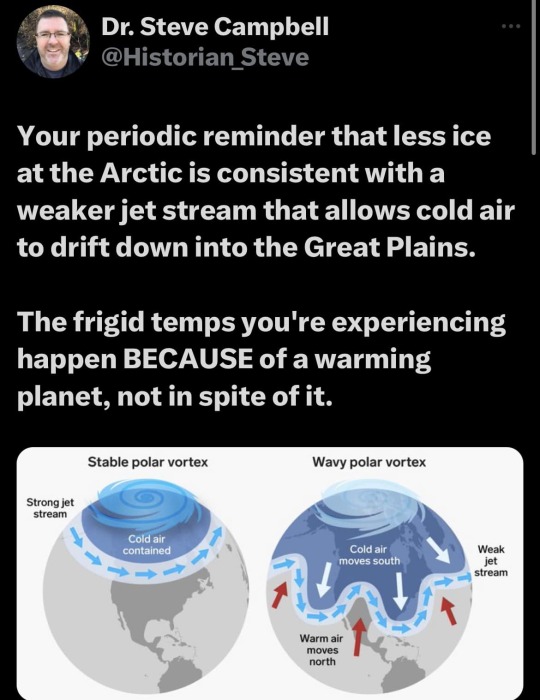
So many people do not understand the relationship between climate change and cold weather.
112K notes
·
View notes
Text
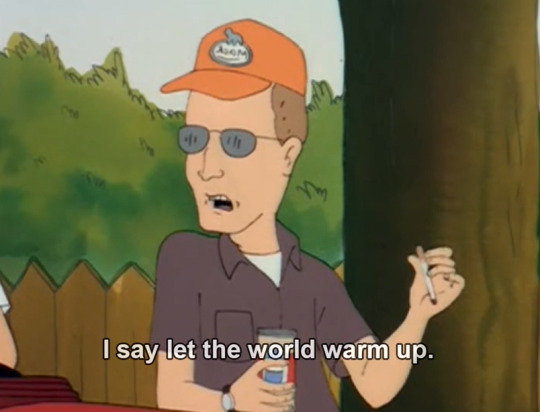





The fact that this joke is from the very first episode (which aired in January 1997) is messing with me.
61K notes
·
View notes
Text
No paywall version here.
"Two and a half years ago, when I was asked to help write the most authoritative report on climate change in the United States, I hesitated...
In the end, I said yes, but reluctantly. Frankly, I was sick of admonishing people about how bad things could get. Scientists have raised the alarm over and over again, and still the temperature rises. Extreme events like heat waves, floods and droughts are becoming more severe and frequent, exactly as we predicted they would. We were proved right. It didn’t seem to matter.
Our report, which was released on Tuesday, contains more dire warnings. There are plenty of new reasons for despair. Thanks to recent scientific advances, we can now link climate change to specific extreme weather disasters, and we have a better understanding of how the feedback loops in the climate system can make warming even worse. We can also now more confidently forecast catastrophic outcomes if global emissions continue on their current trajectory.
But to me, the most surprising new finding in the Fifth National Climate Assessment is this: There has been genuine progress, too.
I’m used to mind-boggling numbers, and there are many of them in this report. Human beings have put about 1.6 trillion tons of carbon in the atmosphere since the Industrial Revolution — more than the weight of every living thing on Earth combined. But as we wrote the report, I learned other, even more mind-boggling numbers. In the last decade, the cost of wind energy has declined by 70 percent and solar has declined 90 percent. Renewables now make up 80 percent of new electricity generation capacity. Our country’s greenhouse gas emissions are falling, even as our G.D.P. and population grow.
In the report, we were tasked with projecting future climate change. We showed what the United States would look like if the world warms by 2 degrees Celsius. It wasn’t a pretty picture: more heat waves, more uncomfortably hot nights, more downpours, more droughts. If greenhouse emissions continue to rise, we could reach that point in the next couple of decades. If they fall a little, maybe we can stave it off until the middle of the century. But our findings also offered a glimmer of hope: If emissions fall dramatically, as the report suggested they could, we may never reach 2 degrees Celsius at all.
For the first time in my career, I felt something strange: optimism.
And that simple realization was enough to convince me that releasing yet another climate report was worthwhile.
Something has changed in the United States, and not just the climate. State, local and tribal governments all around the country have begun to take action. Some politicians now actually campaign on climate change, instead of ignoring or lying about it. Congress passed federal climate legislation — something I’d long regarded as impossible — in 2022 as we turned in the first draft.
[Note: She's talking about the Inflation Reduction Act and the Infrastructure Act, which despite the names were the two biggest climate packages passed in US history. And their passage in mid 2022 was a big turning point: that's when, for the first time in decades, a lot of scientists started looking at the numbers - esp the ones that would come from the IRA's funding - and said "Wait, holy shit, we have an actual chance."]
And while the report stresses the urgency of limiting warming to prevent terrible risks, it has a new message, too: We can do this. We now know how to make the dramatic emissions cuts we’d need to limit warming, and it’s very possible to do this in a way that’s sustainable, healthy and fair.
The conversation has moved on, and the role of scientists has changed. We’re not just warning of danger anymore. We’re showing the way to safety.
I was wrong about those previous reports: They did matter, after all. While climate scientists were warning the world of disaster, a small army of scientists, engineers, policymakers and others were getting to work. These first responders have helped move us toward our climate goals. Our warnings did their job.
To limit global warming, we need many more people to get on board... We need to reach those who haven’t yet been moved by our warnings. I’m not talking about the fossil fuel industry here; nor do I particularly care about winning over the small but noisy group of committed climate deniers. But I believe we can reach the many people whose eyes glaze over when they hear yet another dire warning or see another report like the one we just published.
The reason is that now, we have a better story to tell. The evidence is clear: Responding to climate change will not only create a better world for our children and grandchildren, but it will also make the world better for us right now.
Eliminating the sources of greenhouse gas emissions will make our air and water cleaner, our economy stronger and our quality of life better. It could save hundreds of thousands or even millions of lives across the country through air quality benefits alone. Using land more wisely can both limit climate change and protect biodiversity. Climate change most strongly affects communities that get a raw deal in our society: people with low incomes, people of color, children and the elderly. And climate action can be an opportunity to redress legacies of racism, neglect and injustice.
I could still tell you scary stories about a future ravaged by climate change, and they’d be true, at least on the trajectory we’re currently on. But it’s also true that we have a once-in-human-history chance not only to prevent the worst effects but also to make the world better right now. It would be a shame to squander this opportunity. So I don’t just want to talk about the problems anymore. I want to talk about the solutions. Consider this your last warning from me."
-via New York Times. Opinion essay by leading climate scientist Kate Marvel. November 18, 2023.
#WE CAN DO THIS#I SO TRULY BELIEVE THAT WE CAN DO THIS#WE CAN SAVE OURSELVES AND THE WORLD ALONG WITH US#climate crisis#united states#climate change#conservation#hope posting#sustainability#climate news#climate action#climate emergency#fossil fuels#global warming#environmentalism#climate hope#solarpunk#climate optimism#climate policy#earth#science#climate science#meteorology#extreme weather#renewable energy#solar power#wind power#renewables#carbon emissions#climate justice
33K notes
·
View notes
Text
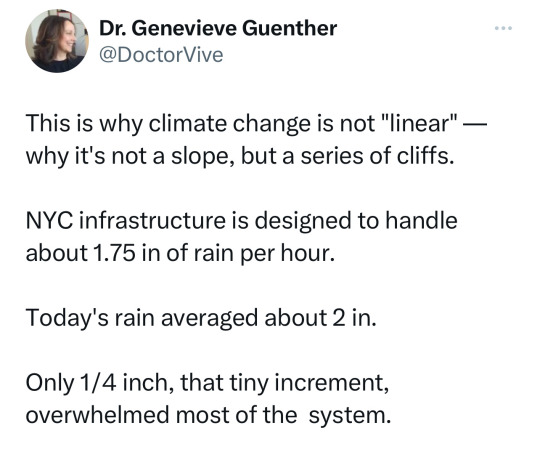

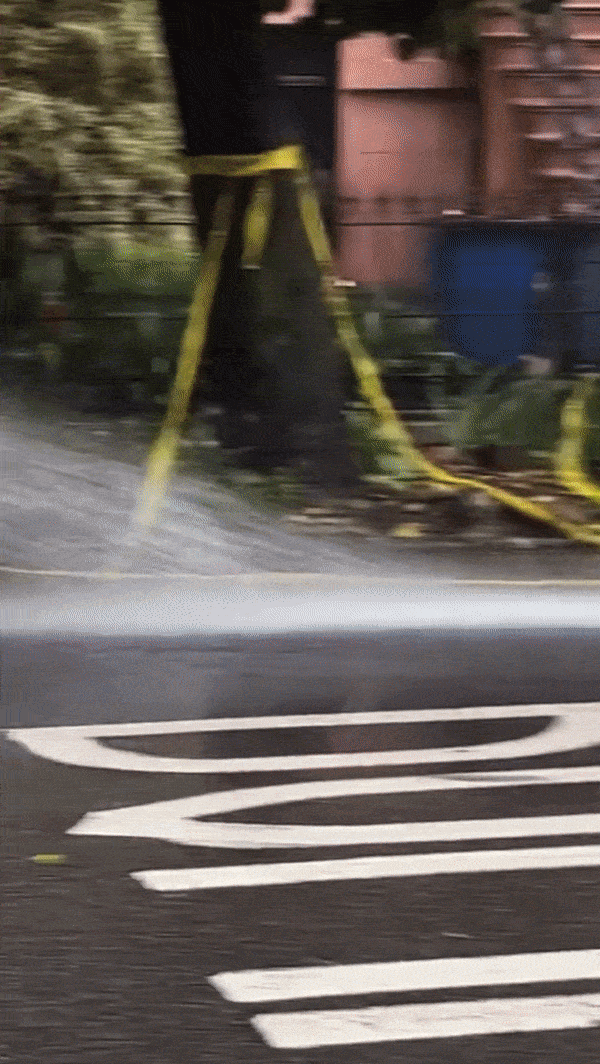
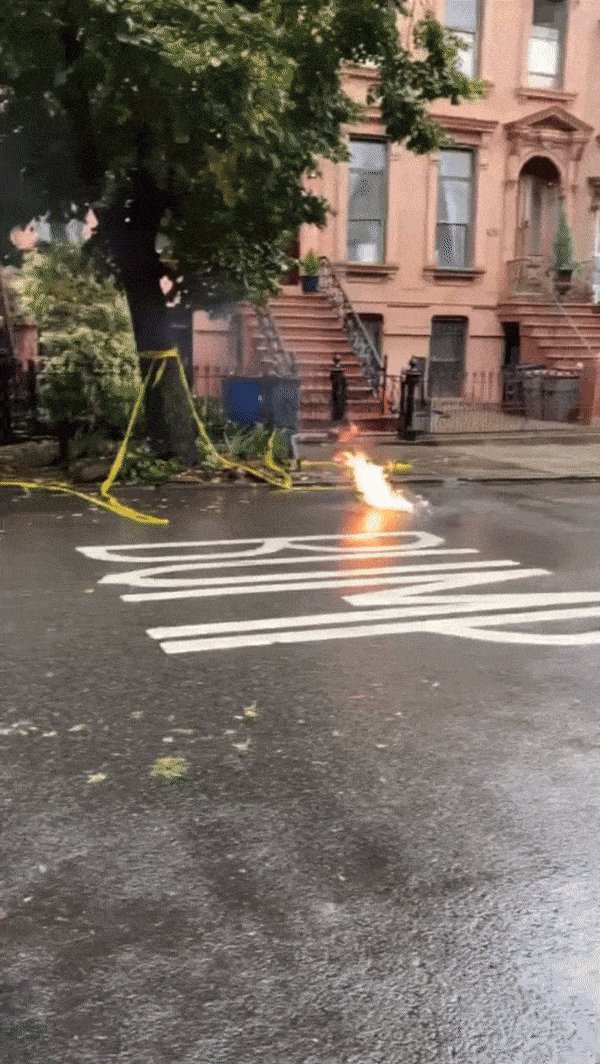



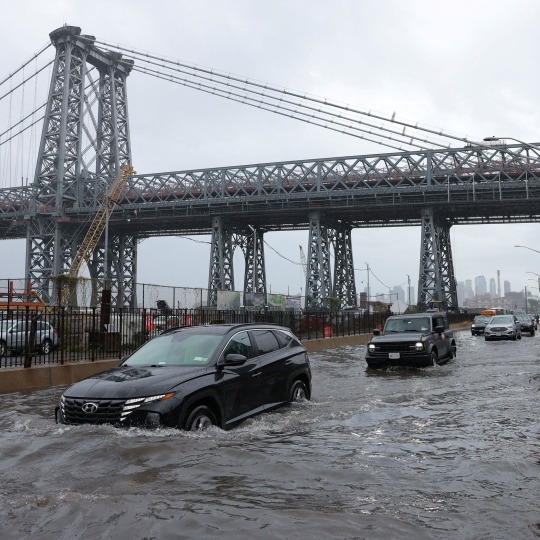
Nothing to see here, just fire + floods + climate change
#politics#climate change#climate crisis#global warming#nyc#nyc flooding#nyc floods#climate collapse#civil engineering
29K notes
·
View notes
Text
Alaska is warming too fast--4 times faster than the global average. I choose to be cold.
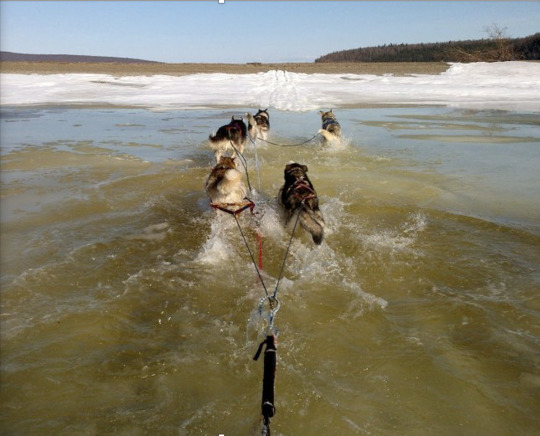
1 note
·
View note
Text
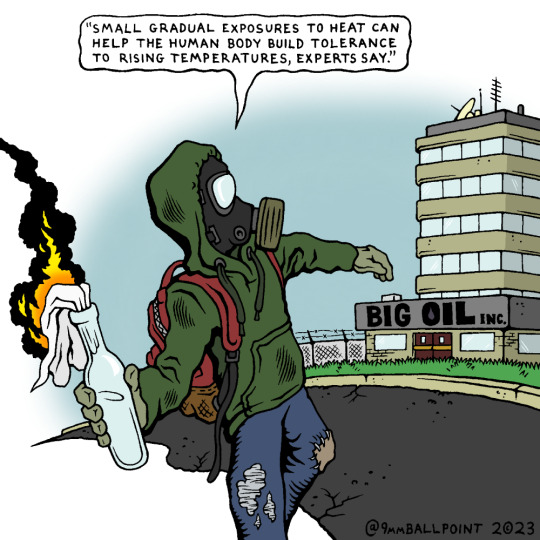
PS: for entertainment purposes only, of course
PPS: actual Washington Post quote
27K notes
·
View notes
Text
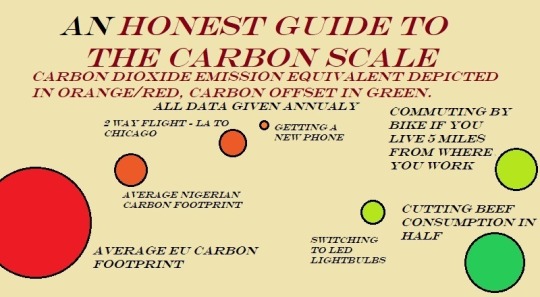
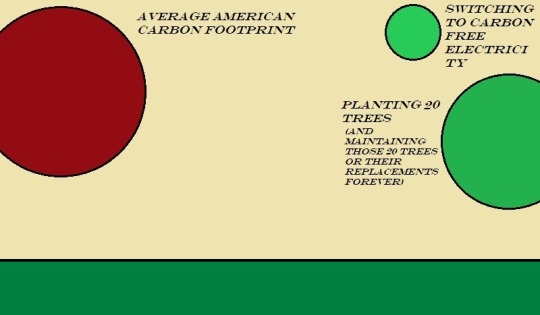














Sorry for the bad photo quality, Tumblr doesn't like posts this long.
#ramblings#politics#communism#socialism#climate change#not a reblog#when our turn comes#we shall not make excuses for the terror#environment#enviromentalism#carbon emissions#carbon footprint#global warming#climate collapse#anti capitalism#radical left#left wing#long posts#long post#color of the sky#hot take#this took like 20 minutes to upload because Tumblr kept crashing#and like 90 minutes to make
43K notes
·
View notes
Text
It should've been this cold since the beginning of November. I should've been drowning in scarves, sweaters and jackets since at least October, not the miniskirt I was rocking.
It is about 2°C here in December. Too hot for December.
I am used to -5°C, -7°C at worst for December 7th. -10°C to -16°C at the beginning of January. 0-1°C was the norm past October 8th.
I am used to snow above my knees, blocking the door and the traffick. To the frozen glass you have to scrap every day, so from October to April I had to wake up an hour earlier for my father to scrap the frost off his wind-shield and my brother and I to remove snow behing the car. And of course, for my parents to drive carefully on glaze.
From October to April.
I remember snow in May.
I remember having sensory overload because the birds in June to September were chipping so fucking loudly.
I remember the bugs in summer.
I remember summer behind with 25°C at its hottest. 30+°C was for the holidays at the beach but not at home.
I shouldn't be able to go out with my open leather jacket and overheating. My leather jacket was always deemed "not warm enough" for winter. I should be wearing two sweaters and a thick winter coat, and special winter socks in my boots. Not my thin pantyhose only.
I remember being cold. I hated it at the time, but now I want to be cold again.
0 notes
Text





#yemen#jerusalem#tel aviv#current events#palestine#free palestine#gaza#free gaza#news on gaza#palestine news#news update#war news#war on gaza#climate change#climate crisis#climate justice#global warming#environmental justice
6K notes
·
View notes
Text
The Little AC that Can
We think that Coolzy, the little personal air conditioner, can help avoid many gigatonnes of carbon emissions. Learn how, and tell us if we are wrong.
I was brought up on the story of the little engine that could, taking on a seemingly impossible task with the mantra “I think I can… I think I can… I think I can… I think I can…”
We at Coolzy think we can help avoid many gigatonnes of CO2 emissions. Read and tell us if we’re wrong.
I have just returned from a month in Pakistan where the temperature in our bedroom never dropped below 30 °C, the…

View On WordPress
#africa#air conditioner#bangladesh#climate action#climate warming#cooling#COP28#emissions reduction#engineering#engineers#environment#global warming#health#India#Pakistan#sleep quality#South Asia#sustainability
0 notes